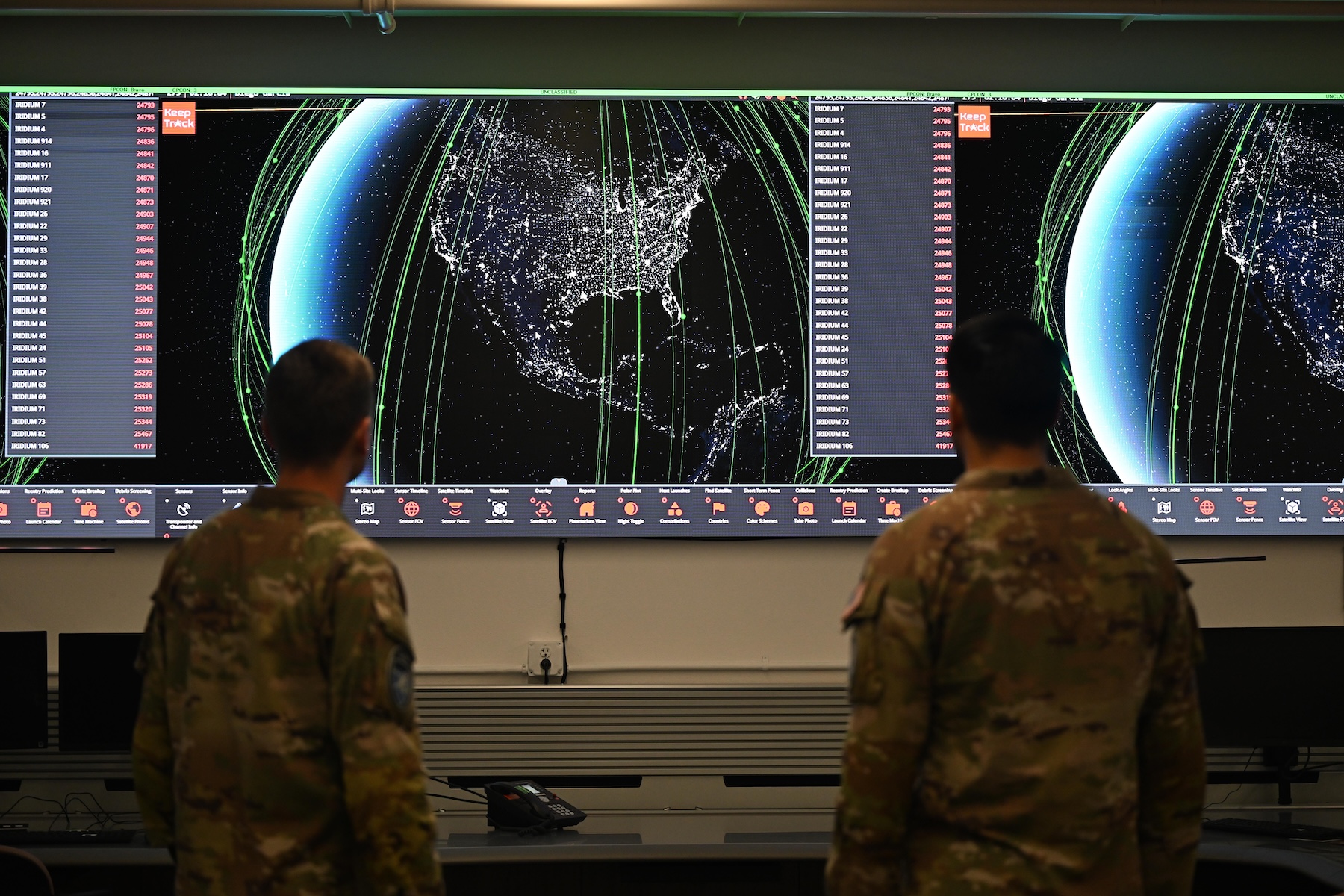The trade organizations count the largest Western commercial satellite operators among their members: SpaceX, Amazon, Eutelsat OneWeb, Planet Labs, Iridium, SES, Intelsat, and Spire. These are the companies with the most at stake in the debate over the future of space traffic coordination. Industry sources told Ars that some companies are concerned a catastrophic collision in low-Earth orbit might trigger a wave of burdensome regulations, an outcome they would like to avoid.
"Without funding for space traffic coordination, US commercial and government satellite operators would face greater risks—putting critical missions in harm's way, raising the cost of doing business, and potentially driving US industry to relocate overseas," the industry groups warned.

Members of the 18th Space Defense Combat Squadron observe orbital data at Vandenberg Space Force Base, California, on October 4, 2024. Credit: US Space Force/David Dozoretz
The military currently performs the spaceflight safety mission, providing up to a million collision warnings per day to give satellite operators a heads-up that their spacecraft will encounter another object as they speed around the Earth at nearly 5 miles per second. A collision at those velocities would endanger numerous other satellites, including the International Space Station. This happened in 2009 with the accidental collision of a functional commercial communications satellite and a defunct Russian spacecraft, adding more than 2,000 pieces of debris to busy orbital traffic lanes.
Ideally, the Space Force issues its warnings in time for a satellite operator to maneuver their spacecraft out of the path of a potential collision. Satellite operators might also have more precise information on the location of their spacecraft, and determine that they don't need to perform any collision avoidance maneuver.
The military's Space Surveillance Network (SSN) tracks more than 47,000 objects in orbit. Most of these objects are orbital debris, but there's a growing number of active spacecraft as many operators—mainly SpaceX, Amazon, the Space Force, and China—deploy megaconstellations with hundreds to thousands of satellites.
The Satellite Industry Association reports that nearly 2,700 satellites were launched into Earth orbit last year, bringing the total number of active satellites to 11,539, a threefold increase over the number of operating spacecraft in 2020.
Under strain
Space Force officials are eager to exit the business of warning third-party satellite operators, including rivals such as Russia and China, of possible collisions in orbit. The military would prefer to focus on managing ever-growing threats from satellites, an intensive effort that requires continual monitoring as other nations' increasingly sophisticated spacecraft maneuver from one orbit to another.
.png)
 3 hours ago
1
3 hours ago
1











 English (US) ·
English (US) ·